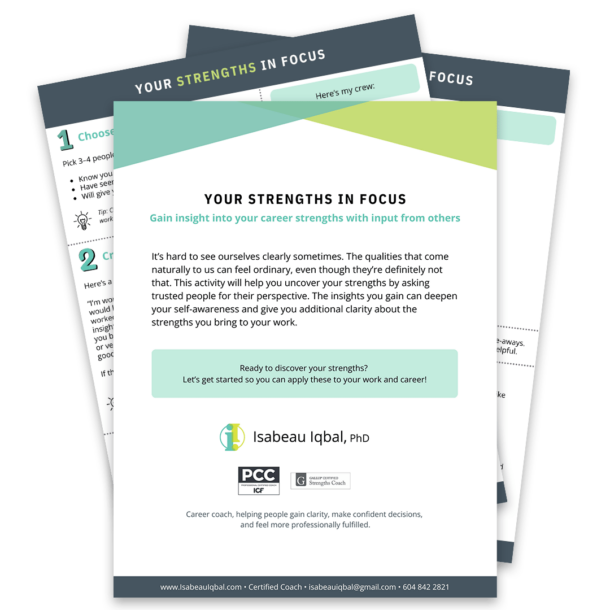I grew up with the belief that ‘fixing’ my weaknesses was something I should consistently work on. Given I have no shortages of weaknesses, I had my work cut out for me. 😕
It was only a few years ago, when I was introduced to “StrengthsFinder”1 and trained to become a Gallup-Certified Strengths Coach, that I learned there was another perspective to professional growth: it is called a strengths-based approach. In a nutshell, a strengths-based approach builds on what’s working (e.g., individually, in partnerships, in a team) and puts forth that growth ascends faster when we focus on our strengths rather than trying to “fix” our weaknesses.


Manage weakness ≠ fix weakness
The key difference is that, in a strengths-based approach, we are attempting to manage (not fix or ignore) weaknesses.
So, let’s see what this means at an individual level by taking a look at one of my weaknesses: the tendency to collect a LOT of information before I act on something. And, to make this really concrete, let’s take the example of preparing for a workshop.
In the traditional model of professional growth, I might frame this weakness as something akin to “fear of taking action” or “over-preparing” and (legitimately) fret that things are taking me longer than necessary. I might then try to fix this situation in any number of ways that could include: putting a time limit on myself for the information-collection phase, attempting to curtail my tendency to think about things a LOT, and reminding myself that I should practice a “good enough” mentality.
The tricky thing is that those approaches are, for me, disingenuous. They’re good approaches–but they go against the core of who I am.
Using a strengths-based approach, I would reframe the I “spend-too-much-time collecting/thinking” situation; the reframe is subtle but important. It might go something like this:
- Remind myself that my end goal is to take action sooner for a given project.
- Acknowledge that collecting information and thinking extensively about things help me feel more confident.
- Start my workshop planning process early so I have time to collect and think…but, not so early that I drive myself nuts with too many possibilities.
- Draw on my Achiever talent (i.e., one of the 34 possible ‘strengths’ according to the CliftonStrengths assessment) to conjure that rush I get from ticking things off the list and break my task list up into small pieces so I can begin to gain the satisfaction of completing items.
Resource
Focus on your strengths, manage your weaknesses. A short post, with some examples of how the author interprets the advice of “manage your weaknesses”.
Note 1 and resource: Though most people know it as “Strengthsfinder”, the official name is the CliftonStrengths assessment. If you’re curious to know more and/or want to take the assessment, here is a previous blog post with more information.
Photo from Pixabay


